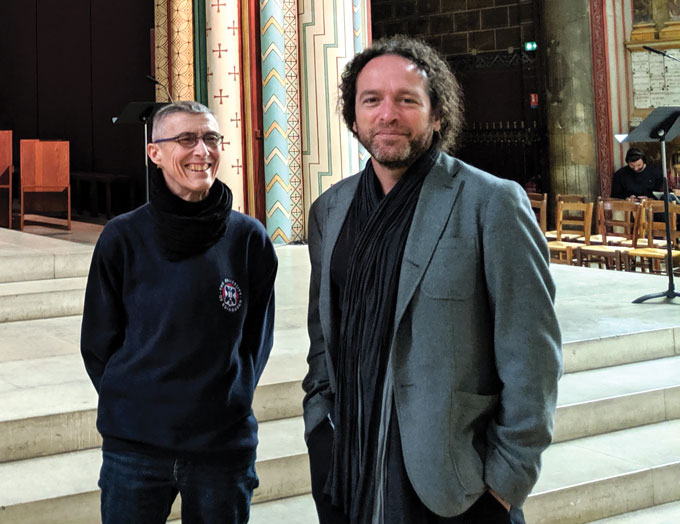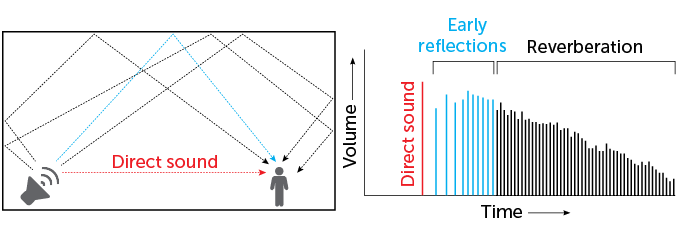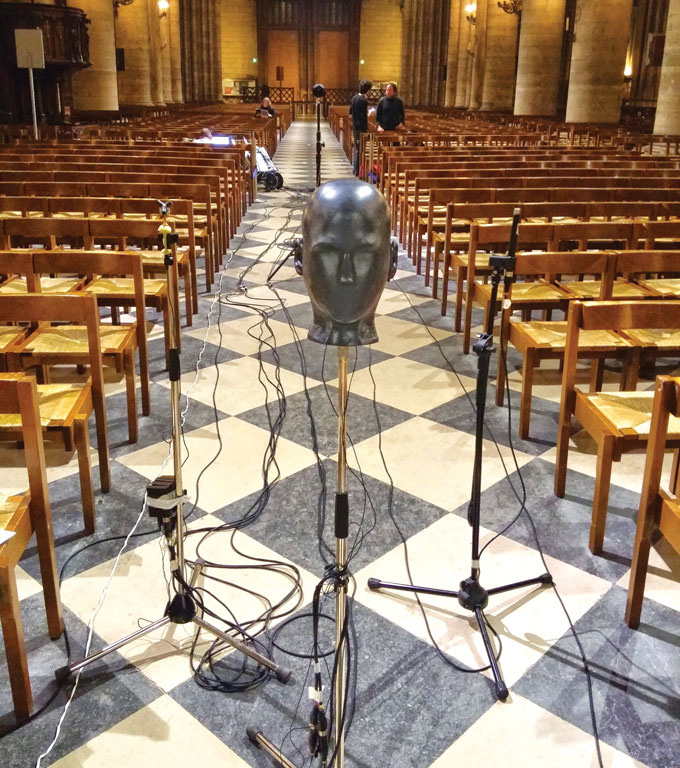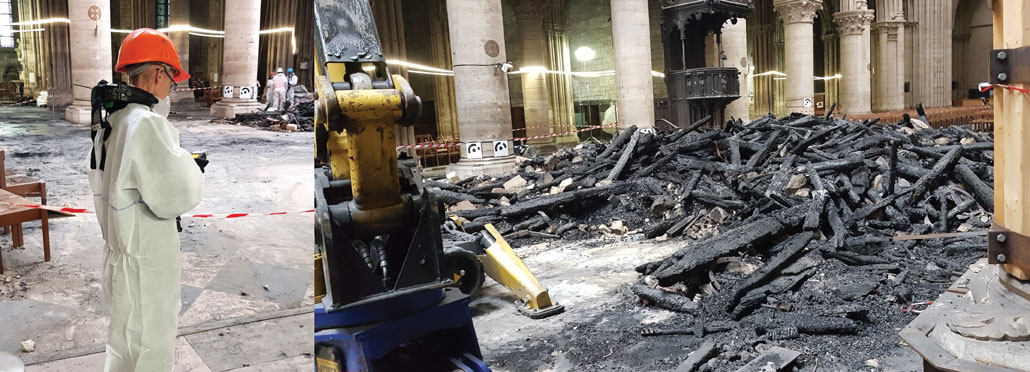Giving Notre Dame back her unique voice
Scientists aim to bring back the sound quality of this iconic cathedral

An April 2019 fire destroyed most of the interior of Notre Dame in Paris, France. Now scientists are working to figure out how rebuilders might bring back the iconic cathedral — and the church’s famed sound.
Hemis/Alamy Stock Photo
Share this:
- Share via email (Opens in new window) Email
- Click to share on Facebook (Opens in new window) Facebook
- Click to share on X (Opens in new window) X
- Click to share on Pinterest (Opens in new window) Pinterest
- Click to share on Reddit (Opens in new window) Reddit
- Share to Google Classroom (Opens in new window) Google Classroom
- Click to print (Opens in new window) Print
For centuries, the inside of Notre Dame cathedral saw little sunlight. But this past July when Brian Katz stepped inside the French cathedral, its famed arched ceiling was open to the full sun. It had been nearly three months since an April 15 blaze tore through the Paris church. The scent of that fire lingered. And the floor still lay heaped with charred wood. But to Katz and his colleague Mylène Pardoen, the most glaring concern was another sensory loss — the cathedral’s “voice.”

The grandest cathedrals are known for an echolike quality known as reverberance (Re-VUR-bur-unce). Before the fire, the tap of a heel inside Notre Dame or a cough could ring loudly throughout the space. It’s something that tended to make visitors step softly, keep their voices low and move slowly. Notre Dame de Paris — which translates to Our Lady of Paris — had a way of imposing silence upon her guests.
Construction on this famous French cathedral started in 1163. This church is known for its grand architecture and gargoyles (the imaginary stone creatures that perch on its roof). You might know this church from the book or movie, The Hunchback of Notre Dame. That’s a fictional story about a bell-ringer in the cathedral.
Now, as people plan the cathedral’s rebuilding, Katz is on a mission. He wants to help bring back the church’s sonic majesty. And he is about as well trained to attempt this as anyone. He’s an acoustics researcher for the French research agency CNRS. He works in Paris at nearby Sorbonne University. Using sound measurements and a computer model, Katz and his colleagues have already reproduced the intact cathedral’s reverberance. It’s part of a field of science known as heritage acoustics.
Katz can use a computer to apply those acoustics to music recorded in some other space. He can make the music sound as if it were being played in the intact Notre Dame. By adjusting that simulation, he also can reveal how choices made during the church’s rebuilding might affect Notre Dame’s sound. Or he can resurrect the Notre Dame of old — documenting how past renovations to its structure may have changed the cathedral’s sound.
While it’s common to have pictures that document the interior of a historic building, recording what a structure first (or last) sounded like is less common. Now, following the Notre Dame disaster, heritage acoustics is entering the spotlight. Here and elsewhere, Katz and others are wielding their knowledge of acoustics and other fields of physics to unveil a hidden aural history of churches, theaters and other notable structures.
Sonic history
Damian Murphy works as an acoustician (Ah-kooh-STIH-shin) — sound scientist — in England at the University of York. He has performed acoustic studies at sites ranging from a chocolate factory to a former nuclear reactor hall. “The past was not a silent place,” he notes. “Sound is a fundamental part of our human experience,” and one that seldom gets captured in history books.
But for a cathedral, especially, “the sound and the feeling you get when you are inside … is key for the [building’s] character,” says Lidia Álvarez-Morales. An acoustical engineer, she too works at the University of York.
The acoustics in a cathedral are all about how sound bounces off its surfaces. Clap your hands, for instance. This triggers vibrations of air molecules. They travel in a wave, causing variations in pressure. Some of those waves travel directly to your ear. You hear that sound right away. Other waves travel elsewhere until they reach a wall, floor or other surface in the room. These waves will bounce off that surface and may reach your ear somewhat later.
Lingering notes
(Left) Direct waves (red) bring the first sounds heard after a brief noise. These are followed quickly by reflected sound waves (blue). Waves that reflect many times create reverberations (black); their volume slowly dies out over time (right illustration).

Source: B. Boren
Where there is only one reflecting surface, such as the faraway wall of a canyon, the reflected waves produce an echo — a delayed repetition of the original sound. But in a cathedral, you’ll instead hear reverberation. This happens “when we have, say, a thousand reflections that are all coming back to us so fast that we can’t resolve any individual one of them,” says Braxton Boren. This draws out the sound, explains this acoustician. He works at American University in Washington, D.C. In fact, he notes, it can take several seconds for all the reverberations to slowly trail off
Hard surfaces, such as the marble and the other types of stone used in cathedrals, reflect sound waves well. This enhances reverberation. Softer surfaces — carpets, drapes and even people —absorb sound. They make noises die out more quickly.
Because waves take longer to travel between distant surfaces, large rooms tend to increase sound’s staying power. And cathedrals are “the most extreme version of this,” notes Boren. Before the fire, then, Notre Dame was like a mirrored funhouse room for sound, bouncing sounds around and around.
A room’s reverberation time is a measure of how many seconds it takes an initial, loud sound to no longer be heard, or at least to fade by 60 decibels. For a typical living room, that might be half a second. Good concert halls might have a reverberation time of two seconds. The reverberation time in cathedrals can exceed five seconds. (Look at a watch and see how long five seconds is.)
Such long reverberation times can muddle fast-moving music passages as notes step on top of one another. Similarly, it can make speech hard to understand. But for organ music or religious chanting, “the acoustic conditions are really good,” says Álvarez-Morales. Indeed, she notes, this type of music was designed for such reverberating structures.
Did Notre Dame inspire musical harmony?
Gregorian chants were popular when Notre Dame was first being built. In that music, everyone sang the same note at once. But the sound environment in big cathedrals made successive notes overlap. This could have shown music composers which notes sounded good together. Eventually, some people might have tried writing music for singers to deliberately overlap their tones. Such a change — the introduction of harmony — would have been revolutionary.
If that’s what happened, the history of modern Western music may have been shaped by Notre Dame’s “voice.” So Notre Dame, says Braxton Boren of American University, is “incredibly historically significant.”
The aural measure of Notre Dame
On the day of the fire, Notre Dame’s acoustic history seemed in danger of being lost forever. As residents of Paris gathered to watch the blaze, “No one was really talking above a whisper,” Katz recalls. He opens his eyes wide while recalling the scene: “No one knew what to say or what to do.”
By the next day, he realized there was something he could do. His group had made the only detailed measurements of this church’s acoustics. That was on April 24, 2013 — about 850 years after Notre Dame’s first stone was laid. Katz and his colleagues had brought microphones and speakers. Late at night, after a concert had wound down and the last of the musicians had left, his team got to work.

Katz’s group was out to measure Notre Dame’s “room impulse response.” This describes how an initial sound within a room fades away. It also reveals subtle factors that can impact how people perceive a room’s sound. They can include the length of the delay between when sound waves first reach a listener and when later sets of them may arrive after bouncing off of hard surfaces.
To measure this, the researchers played a sound designed to test the full range of pitches that the human ear can hear. It starts out on a low note and slides up to a high note, like someone playing a slide whistle. They need to test them all. Lower pitches, for instance, might reverberate more than higher ones.
And the room’s response varied based on where the sound came from, and where a microphone had been. So the researchers moved the speaker and microphones from place to place and measured those responses each time. With these data, Katz calculated that for a pitch of middle C, Notre Dame’s reverberation averaged eight full seconds!
Tuning up
Next, Katz and his team turned to their computer model. It estimates how well the different surfaces — marble, stone and wood, for example — absorb or reflect sound. The computer program can estimate how long sounds would reverberate.
The team compared these simulations to the measurements. And the results were close, but didn’t quite match up for all of the pitches. So the researchers tweaked the sound-absorption estimates of various surfaces. Eventually, the acoustic properties of the simulated cathedral matched what the tests in 2013 had recorded.
The researchers then made an “auralization.” This is an alteration of some musical recording. Those changes should make the music sound as it would in various locations within Notre Dame.
Katz then went even further. He worked with a group of researchers to make a virtual-reality recreation of a performance in Notre Dame. It was complete with a 3-D visual model of the church’s interior. The viewer flies about the cathedral as the music plays, swooping low over the orchestra, then zipping up into high, secluded passageways. When viewers are virtually moved to the back of the building, the reverberation they hear is enhanced. So the individual notes will be more muddled. Turn your head, and the sound will change too. Those changes account for the new position of your ears.
Brian Katz and David Poirier-Quinot/CNRS, Sorbonne University
The researchers started with the audio recorded at a 2013 concert in Notre Dame — the same night Katz had made his measurements. But that classical-music concert had been recorded by microphones placed close to the performers. These picked up mostly direct sound. There had been little reverberation. Using his computer model, however, Katz could recreate how the concert would have sounded to someone sitting in the audience or wandering through any part of the church.
In the future, Katz plans to tweak his computer model to account for changes in Notre Dame as it is being rebuilt. Even relatively minor choices might notably alter its sound. For example, by comparing his results with measurements from the 1980s, Katz showed that the addition of carpeting around the edges of the cathedral substantially cut down reverberations.
Katz also aims to adjust his model to understand how Notre Dame may have sounded in the past. Past renovations included the addition of the church’s now-burned spire. In some eras, Katz suspects, the stone walls might have been coated with plaster and paint. At other times, straw might have lined the floors. Such features could have affected the church’s sound.
Crafting a soundscape
One thing Katz can’t yet do is reproduce the actual sounds that might have been present early in Notre Dame’s past. That’s the specialty of Pardoen. She’s the scientist who accompanied him to the damaged Notre Dame. She works for CNRS at the Maisons des Sciences de l’Homme in Lyon, France. She calls herself a “soundscape archaeologist.” By that, she means she pieces together the sounds of past environments, whether battlefields, cathedrals or cities.
With close cropped hair and dark clothes, she exudes a no-nonsense air. But she breaks the seriousness by frequently stopping to mimic the sounds she studies. For example, she copies the “choo click choo click” of a loom or the “crrrrrr” of stone cutters.
Her major project has been the creation of a video soundscape of central Paris during the second half of the 1700s. Back then, Paris bustled with people. Even the city’s bridges were crammed with buildings several stories high. Viewers of the video feel like they’re wandering those old streets, taking in the sounds. There’s the clacking of horse hooves. You hear a washerwomen at the banks of the river Seine. There’s even the buzzing of flies around a fish market.

To cultivate this sonic bouquet, Pardoen and her team consulted maps, historical documents and paintings. Then they collected historically accurate sounds. To do this, they might track down replicas of the original tools that would have been used. Then they would record them being used.
This allows Pardoen to virtually bring back the forgotten sounds of Notre Dame. In earlier times, artisans and merchants crowded the neighborhood around the cathedral. The racket they made would have leaked into the church’s interior. By inputting these sounds into Katz’s acoustic model, the pair aim to recreate the everyday ambience of Notre Dame at various times in its past.
Together, Katz and Pardoen are part of a group, the Association of Scientists in the Service of Notre Dame de Paris. This group aims to apply science to better understand the cathedral and aid in its rebuilding.
If Parisians want to restore the cathedral to its former acoustic splendor, they’ll have to decide which version of the church to approximate. Do they want the one that existed just before the fire? Would they prefer the Notre Dame of old? They might even want something entirely new and different.
“No historic building is ever completely static,” says Murphy. “As a consequence, this terrible fire, which is a considerable tragedy, is just the next stage in the life of Notre Dame.”







